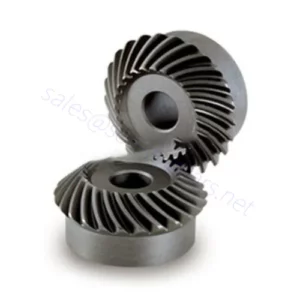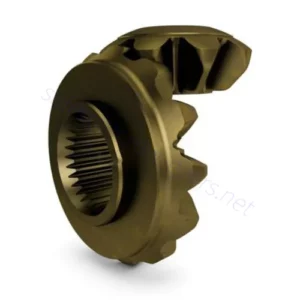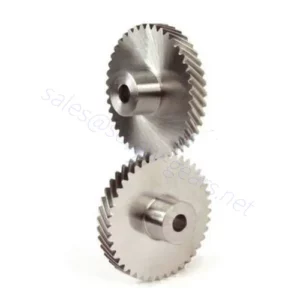Description
Miter gear sets are used in machine designs where it is necessary to change the direction of the drive while maintaining the drive speed. These standards are achieved by employing a set of bevel gears with the same size, profile, and number of teeth. This design allows the gears to be positioned in opposite directions while maintaining a constant speed relationship between the two drives. In most cases, miter gears place the output drive at right angles to the input. However, the design of the gear set can affect almost any directional misalignment.
These gears fall into two basic categories: helical gears and straight-cut gears. The term refers to the angle at which a tooth of a gear cuts near the face or cone angle. Helical cut gears are better for high-speed applications because the curves of the teeth allow for gradual meshing. This reduces the amount of “bump” when the teeth of the two gears mesh, and makes the gear train stronger and quieter. This type of gear is typically used in high-speed applications, such as lawn trimmers, where the motor and drive shaft are oriented at right angles to each other.
(1) Straight bevel gear
In straight miter gears, the teeth are straight and parallel to the generatrix of the pitch cone. Straight bevel gears can be made in smaller sizes than spiral bevel gears. We standardized straight bevel gears as small as module 0.5 in various materials.
(2) Spiral Miter Gears
The teeth of the spiral bevel gear are formed along a helix. They are somewhat similar to cylindrical helical gears in that the teeth are angled. However, the teeth are also curved with helical gears. Compared to straight bevel gears, spiral bevel gears offer advantages in terms of strength, vibration, and noise levels. The disadvantage of spiral bevel gears is that they generate axial thrust loads. Therefore, their assembly requires correct bearing position and firm support.
Straight-cut miter gears are better suited for low-speed applications such as manual door openers and hand tools. In these applications, the disadvantages of spur gears are less pronounced, and the reduced cost of production makes their use attractive. The miter gear material is determined by its intended use, with high carbon steel at the end face for high load and high-speed applications. Nylon and various injection molding resins are used to make gears that don’t work as fast or as hard. The close relationship between the individual gears means that even if only one gear is worn or damaged, two gears in a set should ideally be replaced.



